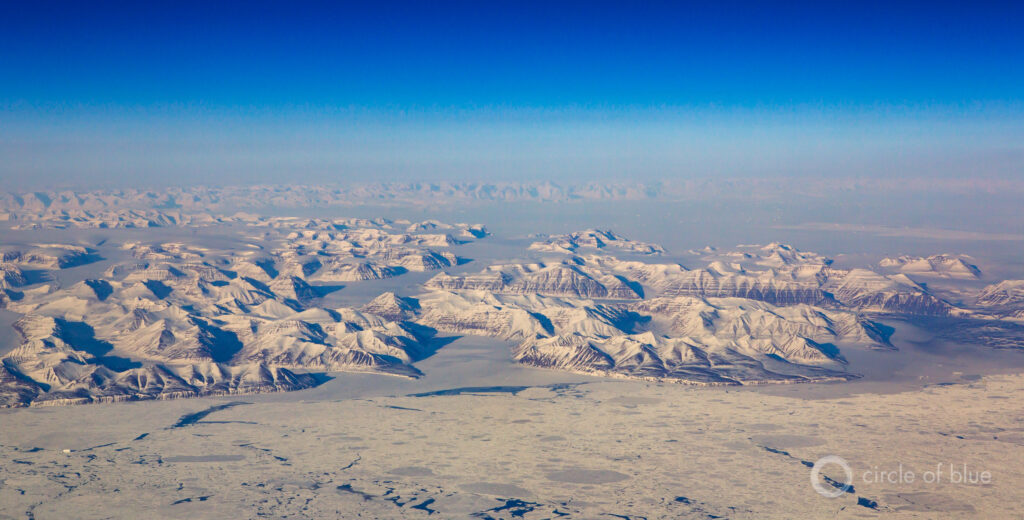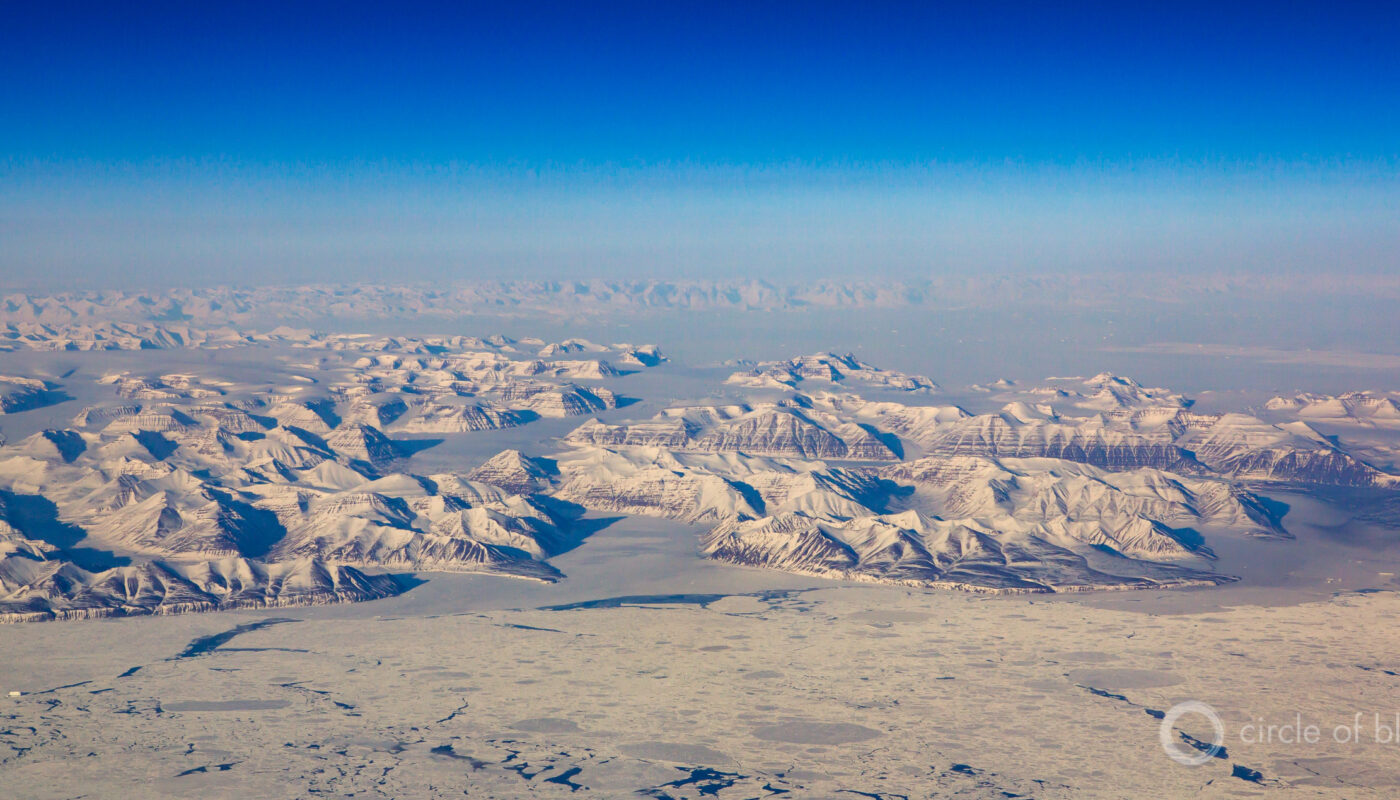
Say this much, President Trump’s vow to “go as far as we have to” to control Greenland is pernicious, consistent, and ironic.
Though he’s obscured his reasons for bringing the world’s largest island under American management, Trump’s aides and geopolitical experts offer three justifications.
The first: gaining access to critical minerals, even those for batteries to power the electric vehicles that Trump purportedly dislikes.
The second: securing a larger military perch at the top of the world from which to oversee or intimidate Russia and China.
And the third: commanding shipping lanes that are opening in the warming Arctic. In late March the National Snow and Ice Data Center recorded the smallest expanse of Arctic sea ice since record-keeping began in the 1970s.
What hasn’t been mentioned by the White House or Greenland’s new prime minister is a fourth potential objective that is as strategically important as an Arctic seaport or minerals exploration. Both the U.S. and the Danish territory have the opportunity to capture and monetize the torrent of clean fresh water pouring off Greenland and into the North Atlantic and Arctic oceans. Collecting even a tiny portion of the meltwater and transporting it to water-scarce regions in the U.S. and other regions turns Greenland’s overabundance of fresh water into a strategic resource in fierce demand around the world.
Greenland’s political leaders already favor water export as an economic opportunity. At the government’s request, the Geological Survey of Denmark and Greenland canvassed the island to assess the most favorable rivers from which to extract glacial meltwater. Its report, published in 2020, noted that “the Government of Greenland actively supports the prospect of drinking water export from this immense resource.”
Don’t mistake my reporting on this subject as advocacy for bullying or invading a foreign territory to seize its resources. President Trump’s escalating threats are dangerous and indecent.
But gaining access to one of the world’s largest reserves of clean water is a more logical response to warming temperatures than the president’s politically impulsive insistence that climate change is a “hoax.” Climate change, after all, is the essential ecological factor in the president’s interest in Greenland. After decades of being ignored on the world stage, Greenland’s geopolitical attractiveness is due entirely to its melting ice. And there’s a lot of it.
Hang in with these data points. The Greenland ice sheet covers about 80 percent of the island, stretching across 656,000 square miles — an area almost three times the size of Texas. At its deepest point, Greenland’s ice is 1.9 miles thick and contains about 700,000 cubic miles of ice.
With rising temperatures, more meltwater now flows off Greenland than from the two other big planetary ice sheets — the Himalayas and Antarctica. If all of Greenland’s ice melted, sea level would rise about 24 feet. And melting is fast increasing. From 1992 to 2018, some 3,541 cubic kilometers of water — 935 trillion gallons — poured off Greenland, or the equivalent of 12 years of the Mississippi River’s flow into the Gulf of Mexico.
There’s a huge national and global market for even a small portion of that treasure trove of fresh water. A quarter of the planet’s people living in 25 countries annually face extremely high water stress and regularly consume almost their entire available water supply. Half of the world’s population — around 4 billion people — live under highly water-stressed conditions for at least a month each year.
In the U.S., states across the Mountain West and Great Plains stretching in a half-moon arc from Idaho to California are experiencing persistent drought that empties lakes and rivers and depletes groundwater reserves. Thirsty industries and water-intensive resorts dot the world’s coasts and islands.
Given the abundant supply and fervent demand, the last two vital factors in monetizing Greenland’s ice melt are perhaps the most important: price and logistics.
A hint of the first is occurring in Arizona where state officials are weighing a proposal to build a desalination plant on the Pacific Coast in Mexico and transport freshwater 200 miles to the state in a pipeline at a cost currently estimated at $5.5 billion, but is virtually certain to cost much more — if the project is ever built. Another example is the $14 million that Queen Creek, a Phoenix suburb, paid for the right to 2,000-acre feet of water (650 million gallons) plus the more than $600,000 annual cost of transporting it to the city. Every passing year drives the price of water higher.
Transporting water from the port at Nanortalik, Greenland’s southernmost community, to the U.S. or any other country is readily doable. The super tanker voyage to Buffalo, N.Y., for instance, crosses 1,800 miles of ocean and seaway and takes 15 to 20 days. Once offloaded, fresh water can be transported in a U.S. oil and natural gas pipeline network that spans millions of miles. Engineers assert that fossil fuel pipelines can be thoroughly cleaned and made available for shipping freshwater to almost any location in America.
If all this sounds preposterous, it’s not. Recall that 15 years ago, a Colorado entrepreneur proposed shipping water from Alaska to the world in tankers or floating plastic bags. Another idea in 2010 involved a French computer-aided design company that used satellite tracking and computer modelling to test the idea of towing a 7 million-ton iceberg 2,900 miles from Newfoundland to slake the thirst of the Canary Islands, which uses desalination to supply its fresh water. The trip would take 141 days, during which the iceberg would lose 3 million tons, or 42 percent of its ice. Bottled water, the most likely near-term use of Greenland’s liquid bounty, is a luxury good already exported from Fiji, Iceland, and European springs.
Precisely because of global warming, Greenland is emerging as perhaps the world’s most important and available source of clean water. Right now, all of it is flowing without profit into the Arctic and North Atlantic oceans. Greenland has an opportunity to defend itself from a Trump-led occupation and market its fabulously valuable natural resource for its own treasury as well as global water security.
